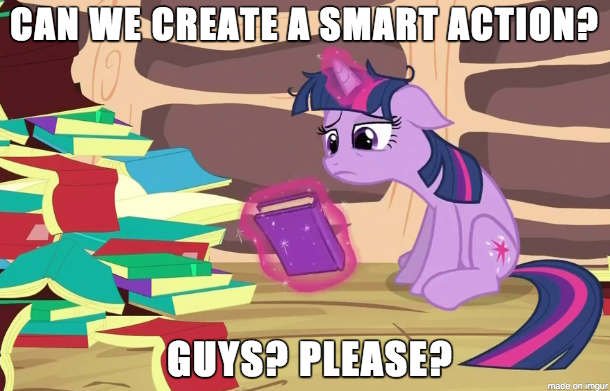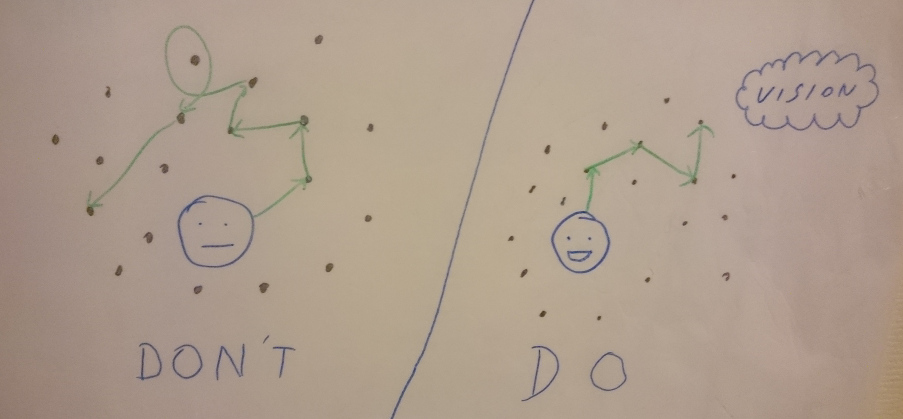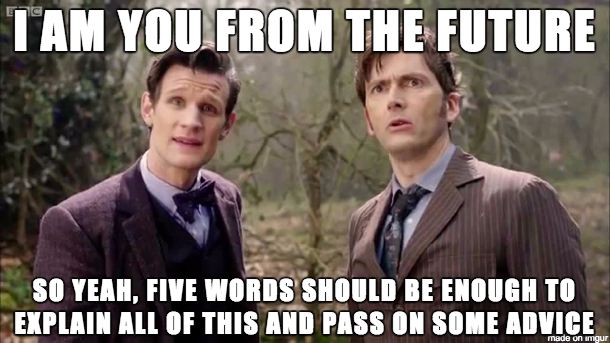If you are part of a scrum team, you hopefully know about retrospectives. At the end of each sprint, the team looks back, and thinks about how to improve their way of working. It’s an invaluable feedback loop, and even if you are not doing scrum, you should think about incorporating this practice in one way or another.
However, if you are part of a long-running scrum team, you maybe noticed that at some point the retrospectives become less valuable. The same topics come up, but the team cannot define an action to fix them. Maybe actions contradict earlier decisions. Or actions are defined, but not executed - the actions are too hard, or not truly perceived as useful. What can we do?

If this situation keeps going for a while, the team might start questioning the value of the retro. And they would be right, of course. A recurring meeting that doesn’t deliver a positive return on time invested is, in Lean terminology, waste.
But maybe there is a simple explanation for things going wrong. Maybe your team lacks vision.
Improvement Kata
The improvement kata, or Toyota kata, is a scientific approach to improvement. It is explained by Mike Rother in his book Toyota Kata, but you will also find plenty of information on-line.
In essence, the idea is to define a far-away vision to give you a direction of improvement, and then move in small steps to get there. At the start of this process, you will have no idea of the path you are going to take to achieve your vision, but along the way, you should get closer and closer to the end goal.

So let’s attempt to put this in a retro format. The goal of this retro is not to define SMART actions, but to get to this vision, which should help future retros gain more direction. The entire retro took us about 90 minutes.
Set the stage: message to the past
If you would get the chance to send five words back in time, directed at the team a few years ago, what would you say?

I’m a fan of starting the retro with a little side activity, if possible with some humor, to get people to think creatively and to set the general mood of the retro. My hope was that, by thinking about the project a few years back, the team members would be ready to think on a bigger scale about the future.
Some excellent responses on this one. A few quotes from memory:
- Implement (feature X) properly, without shortcuts
- Demand specs from (external party Y)
- Invest in GoPro stock!
- The project is still running
- It will get more complicated…
It is really cool to see how everyone has different priorities and struggles, but is still concerned with the well-being of the project.
Gather data: think for yourselves
I shortly explain the concept of what I want to achieve: a vision on a longer term. I make it clear it’s not the usual retro, in that we will not try to get towards actions.
It’s important to really get the team in the long-term mood here, because it’s contrary to the usual retro thinking. The goals can be seemingly unattainable. The path doesn’t have to be clear yet. The vision is allowed to be vague. It can, and will, be made of multiple facets. The one important constraint to a vision, however, is that it cannot conflict with itself. If we don’t agree about a part of the vision, it cannot be in the vision.
Of course, this is a first iteration of a vision, which we will create in a short amount of time. The vision is open to adaptation at later points. We are still agile, after all.
Once this is clear, everyone gets about 5 minutes to write a few things down about what they want to see in the vision.
After these 5 minutes, I attached a poster to the wall with a small mindmap of parts of the project that I could see appearing in the vision.

The idea was to provide inspiration without constraining or guiding the ideas people had for themselves. I’m not sure whether this was needed or even whether it was a good idea. I think the eventual vision would be pretty much the same with or without my hints, but hopefully it got everyone thinking a bit more broadly from the start on.
Generate insights: let’s sit down and talk
After a few more minutes, I asked everyone to arrange themselves in groups of three or four, and discuss the things they had written down. They got another 10 minutes to figure out a part of the vision they could all get behind, starting from their cards. Practical tip: give every group some post-its and enough paper to write their thoughts down.

This is easily the most satisfying part of a retro to me. To see everyone passionately discussing their ideas, listening and talking to each other in a way we don’t often take time for, it’s great. Another perk of this part is that I get 10 minutes of not needing to do a lot of moderation, so I can grab coffee.
Coffee. Effin’ finally.
Converging: elevator pitch
After the groups had enough time to come to consensus, each group shortly presents their vision to the rest of the team. While they did this, I summarized on post-its and stuck them on the wall, once again creating some kind of mindmap of our shared vision.
It’s very important that no nuance gets lost in this summarization. For each item, I asked whether what I wrote down was an accurate description of what the group said, whether everyone understood what we mean, and whether everyone agreed on this aspect of the vision. Where needed, we talked things through.

Once we had all the elements of the vision, I gave some context about what we had been doing by quickly explaining the improvement kata. I mostly did this because I wanted other people of the team to think about how to apply the vision to our future work, and sketching the theoretical background for that seemed useful.
And then, the minions went into uprising
Or rather, the team gave feedback. :) Great, of course, it means people listen and care for the things I was trying to do.
Not everyone was agreeing whether the procedure we followed led to a vision that was carried by the team. It took a bit of talking to agree on how to check this, but in the end we decided on a two-part anonymous vote. First a number between 1 and 5 for their satisfaction with the vision, which doubled as vote for retro-of-the-retro. Second (and optional) the one part of the vision they identified least with.
I tallied the votes after the retro, and we came to the conclusion that the vision was mostly supported by the entire team. Hooray!

Where next?
I don’t know yet. The post-its of the vision are displayed proudly in our war room. I expect the vision to be used in future retros, for example to generate data, to cross-validate potential actions or simply to provide inspiration with a quick glance. This is up to the discretion of future retro moderators and feedback from the rest of the team.
Personally, I fully support the vision we created, and I’ll often refer to it when we are considering different directions in the future.
Credit where credit is due
This retro was inspired by a talk from Nick Oostvogels I attended during the Agile Tour Brussels conference. He also has a blog post on the theme. Thanks for the inspiration, Nick!